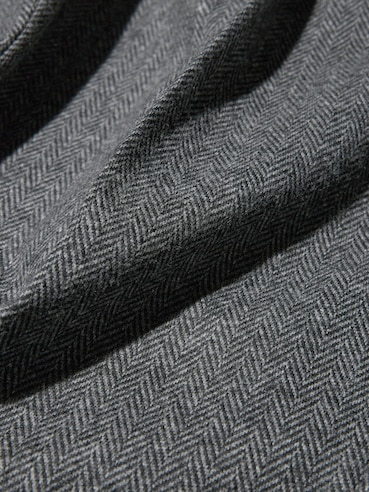Morning Name: Herringbone Weave
The herringbone weave, also called a Broken Twill Weave, is a classic textile pattern that has been around since 500 BC. Its name is derived from the fish herring and its bone structure, which the pattern resembles. Its V-shaped, eye-catching design makes it a popular choice for both fashion and interior design.
 |  |
|---|---|
| Parallel to boundary | 45° rotated |
Key Features:
- Pattern Type: A chevron-like pattern with breaks at regular intervals, creating a zigzag effect.
- Color Scheme: Often a combination of neutral tones like gray, black, or beige, though vibrant colors are also used.
- Structure: Traditionally achieved using a 2:2 twill weave, where the direction of the twill is reversed periodically to create the distinctive “V” shape.
Historical Relevance
Herringbone first appeared in Roman roads but later found its way into clothing apparel in places such as:
- Ancient Europe
- Among Celtic tribes
During the 19th and 20th centuries, it gained popularity in tailored clothing.
Comparison with Other Patterns
Herringbone is often juxtaposed with iconic patterns like Houndstooth and chevron. While houndstooth features abstract checks, herringbone distinguishes itself with its continuous and orderly zigzag structure.
Variations and Modern Usage
Herringbone has evolved from its traditional woolen fabric origins to a pattern used across materials like cotton, denim, and even ceramics. This versatility allows it to transition seamlessly between fashion and interior design.
Examples:
- A sleek herringbone tweed blazer perfect for formal occasions.
- Herringbone tile flooring adds a touch of luxury to modern interiors.
- This Uniqlo Wide Pant series:

Uniqlo's Wide Pants
References
Information:
- Date: 2024.12.25
- Time: 08:00>)